To get the most out of every exercise and build mass every time you visit the gym, it takes a ‘total’ approach.
And that’s why the full body workout is a fantastic kick starter to the new year. It’s a powerful way to promote fat loss and gain muscle fast.
Before we get into what a full body workout actually is and how to do it, it’s worth mentioning that the following example is exactly that – one example.
For best results, alternate and vary your exercises – for instance, the full body workout doesn’t mean you can wave goodbye to ‘back day’. You still want to work on your posture. Same goes for cardio – depending on your fitness goals, the cross trainer or treadmill might still be a crucial part of your training.
I’d recommend always having a rest day in between full body workouts, so your body gets the time needed to recover. You’ll minimise burnouts this way, and you’ll be developing more overall strength by mixing it up anyway.
The two main benefits of this training are:
- Strength
- Hypertrophy (increase in muscle size)
Just a note on rest times during the workout: keep them to a maximum of two minutes to see the best results. If you’re looking to build pure strength then rep ranges should reduce – weights increased and then rest time increases to 2 – 3 minutes for adequate recovery.
- Legs – Multidirectional lunge – 3 sets – 8-10 reps
- Chest – Bench press – 3 sets – 8-10 reps
- Shoulder – Shoulder press – 3 sets – 8-10 reps
- Back – Deadlift – 2 sets – 6-8 reps
- Triceps – Dips – 3 sets – 8-10 reps
- Biceps – Bicep Curls – 3 sets – 8-10 reps
Legs – Multidirectional lunge – 3 sets – 8-10 reps
Start with legs for the best results. When leg muscles are strong, they provide good balance for your entire body.
Whilst squats are useful, multi-directional lunges are the way to go here, as they work a wider variety of muscles, giving you a fuller workout.
There are several ways to lunge;
- Forward lunge
- 45-degree forward lunge
- Side lunge
- 45-degree backward lunge
- Backward lunge
The object of this lunge is to go ‘around the clock’, executing all of the above one rep after the other. The forward lunge is probably the one you are most used to seeing, but there are many benefits to be had by lunging in all directions. Check out our How to do a Multidirectional Lunge guide for further information
Tip: Don’t be scared of lunges damaging your knees – many people avoid them because of this. When performed correctly, lunges are great lower body exercises and the multi-directional approach will give you that well-rounded, well-defined, muscle on your legs.
Chest – Bench press – 3 sets – 8-10 reps
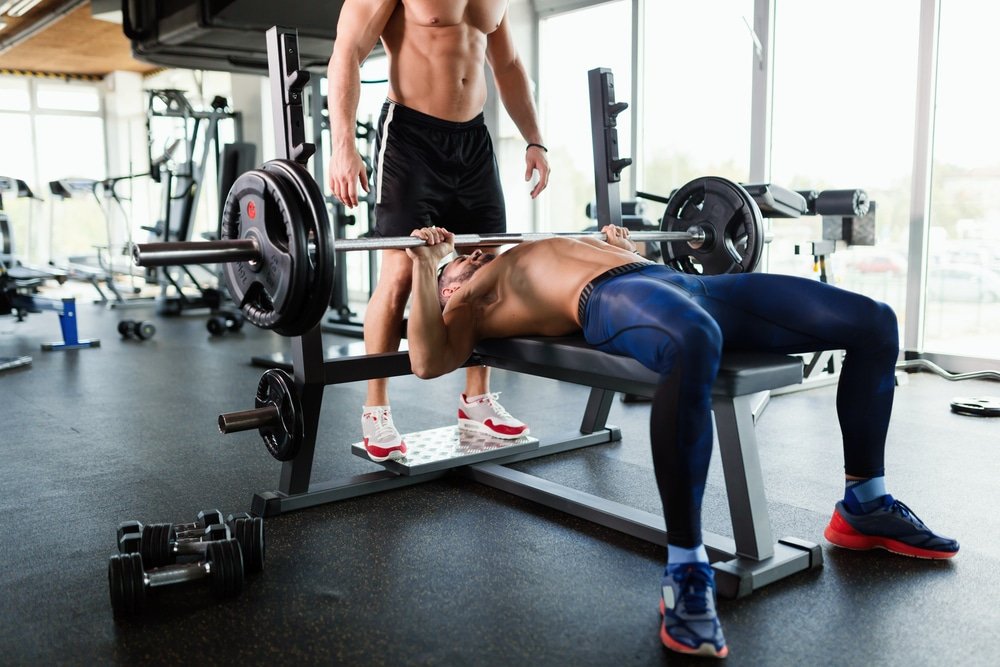 The bench press works your upper body and helps to add mass. When you execute the best bench press technique, your chest and triceps will develop more depth and shape.
The bench press works your upper body and helps to add mass. When you execute the best bench press technique, your chest and triceps will develop more depth and shape.
It can even help improve your posture.
When attempting a bench press it pays to focus on your legs – not just your arms. Your hips and your leg drive are key to ensuring that you can bench the heaviest amount.
One of the most important things I can say about the bench press (or any weight lifting for that matter) is to make sure that you control your breathing. Suck in the air on the way down and push out on the way up. Create torque and the feeling that you are bending the bar away from you to further stability throughout the lift.
Tip: Utilise the strength of your whole body whilst you lift. Stabilise yourself and use the force of the floor by pushing with your feet. Consciously engage your back muscles to get the most from your core.
Shoulder – Shoulder press – 3 sets – 8-10 reps
 People with a variety of fitness levels often enjoy the shoulder press because it produces fast results and increases your full body strength, by helping to bond your core and the upper body. There’s no better way to feel strong than suspending something heavy above your head.
People with a variety of fitness levels often enjoy the shoulder press because it produces fast results and increases your full body strength, by helping to bond your core and the upper body. There’s no better way to feel strong than suspending something heavy above your head.
As with all exercises, form is important (not just for safety, but for optimum results). Keep your elbows tucked-in close to your rib cage at the bottom of the lift, and keep your shoulder blades packed tight throughout.
Keep an eye on your spine and posture – if you ever feel like your back is arching backwards then take a break or lower the weight.
See our full break down of how to perform a shoulder press for further reading.
Tip: Some people have problems with this exercise due to tight pecs (chest) and lats (‘wings’). If you’re struggling, I’d recommend trying supplementary shoulder workouts for a while first – or perhaps a concentrated zero-weight version of the shoulder press. There’s no rush.
Back – Deadlift – 2 sets – 6-8 reps
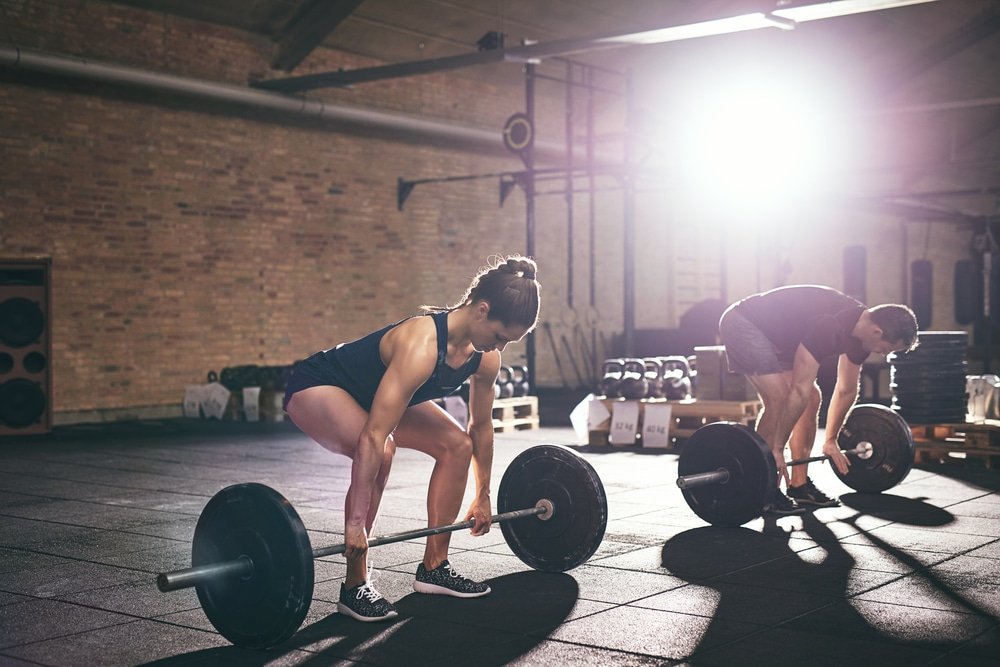
No total body workout would be complete without the deadlift. One of the best (if not the best) move that works almost every muscle in the body.
This exercise will tone your abs, bum, waist, hips and lower back. And it’s one of those motions that you can really apply in your everyday life (you probably deadlifted some laundry of the floor this morning without even realising it).
Basically, it helps to build your overall strength and muscles, quickly.
From the start of your deadlift, keep in mind that rep range is relative to the goal. If you want to develop hypertrophy (increase in muscle size), a higher rep range and lower weight is the option you should choose.
For strength, it’s all about lower reps and heavier weights. This ‘version’ will rely on your leg and back muscles working hard too – making it perfect for the total body workout.
Provided that you have the right deadlifting technique (and you can always check this with one of the trainers at your gym), deadlifts are going to make a difference from the very first time that you attempt them.
As with many core strengthening exercises, it’s recommended to have a steady focal point – pick a motionless target and keep your vision on it. This can help you maintain perfect balance and prevent the dreaded wobble.
Tip: To avoid the notorious deadlift ‘bad back’, practice the technique with zero weights before attempting the exercise. When performed correctly, the deadlift can actually be strengthening for the paraspinal muscles (the muscles that support the spine).
Triceps – Dips – 3 sets – 8-10 reps
 It’s common for people to only work their triceps with the bench press. But you can really test them by using dips.
It’s common for people to only work their triceps with the bench press. But you can really test them by using dips.
Not only is it strengthening for the upper arms, but also for the back and chest. By isolating the muscle with dips, it creates a much more focused activation and produces much faster results on your arms.
Weightlifters and bodybuilders use dips to build strengthen their pressing ability and create an overall rounded look on the arm. Dips directly impact the performance of any pressing motion, which means an easier bench press and overhead press for you too.
There’s a simple dipping technique to follow for your triceps – and the good news is that it can be attempted almost anywhere. At the gym, at home, on two benches whilst waiting for a train (if you don’t mind the funny looks), as long as there’s a stable point to put your arms and room for your legs, the exercise can be performed.
Still, the levelled dips apparatus in the gym is always going to be best.
If you’re finding the dips easy, you can increase the difficulty by holding a weight plate between your knees, or you can wear a rucksack with weights in it.
Tip: You’re best avoid this exercise if you are suffering from any kind of shoulder problem – even well-formed dips can make it worse.
Biceps – Bicep Curls – 3 sets – 8-10 reps
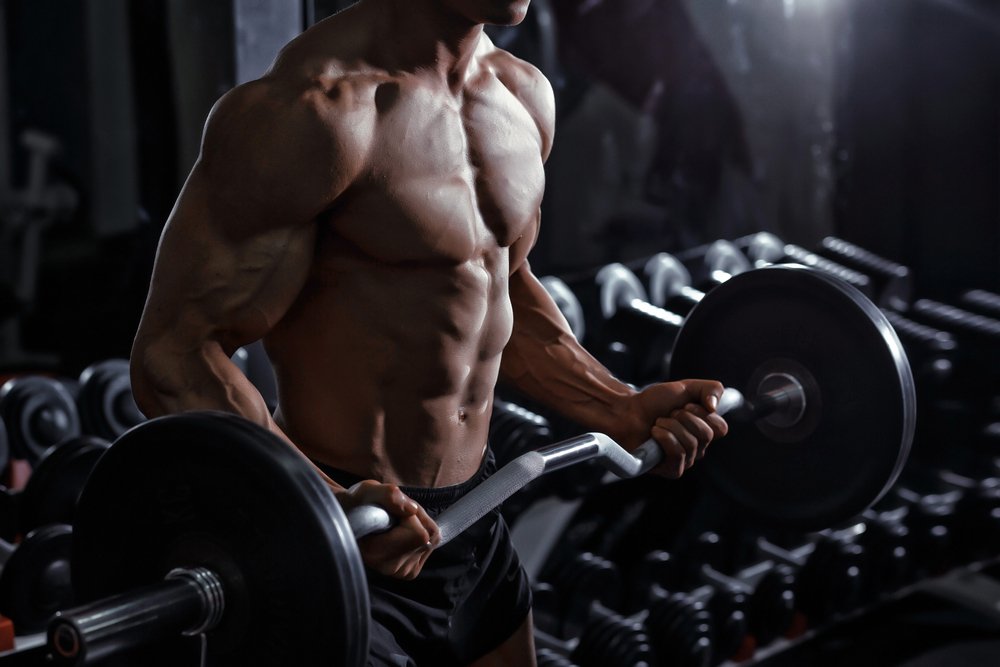 If you really want to increase the pulling power of your arms and build up your muscle, one of the best ways is the repetitive motion of the bicep curl.
If you really want to increase the pulling power of your arms and build up your muscle, one of the best ways is the repetitive motion of the bicep curl.
The key to getting the most out of your workout is slow and controlled movements. Don’t rush through the sets – especially if you’re lifting heavy weights, or you may end up injuring your back and the results won’t be the best anyway.
Always warm down with some stretches and light curling movements afterwards – even if you’ve only executed a couple of heavy sets.
There are several ways you can perform the curl. As part of the full body workout, just keep it simple and stick to the standard bicep curl movement.
Tip: The bicep curl can produce results fast – and you’ll always feel ‘pumped’ after a decent workout. But it’s important to focus on all the other muscles of the arm and not just the bicep, or you will not get the rounded natural look and strength in your arms.
Time to get started …
The full body workout isn’t set in stone. There are variations of each exercise that you can incorporate as you progress.
I like to keep it simple all the way.
Let me know how you’re getting on in the comments, or even if you’ve got any suggestions on improving each exercise.
I’ve broken everything down into a table for ease. Get in touch if you have any questions. And thanks for reading as always.
| Workout | Sets | Rep Range | Weight |
| Multidirectional Lunge | 3 | 8-10 | |
| Chest Press | 3 | 8-10 | |
| Shoulder Press | 3 | 8-10 | |
| Deadlift | 2 | 6-8 | |
| Dips | 3 | 8-10 | |
| Bicep Curl | 3 | 8-10 |

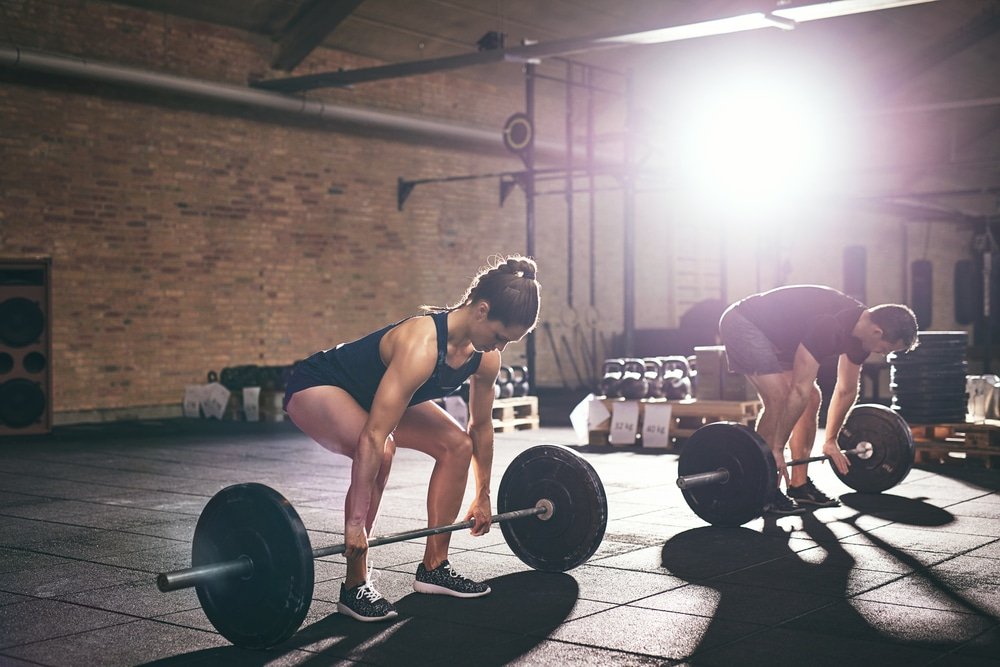







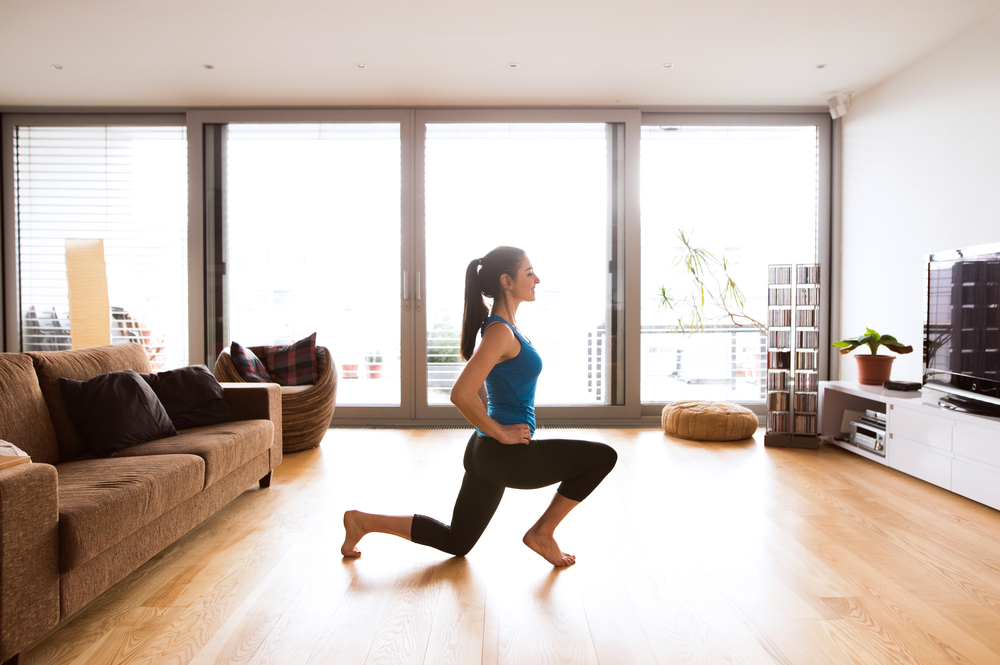
No Comments yet!